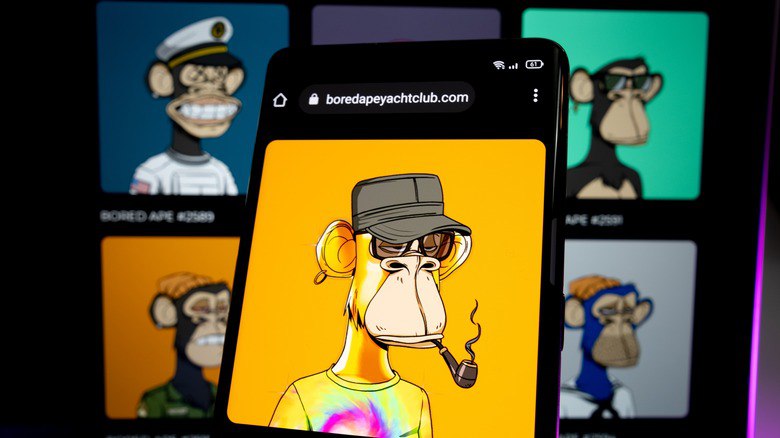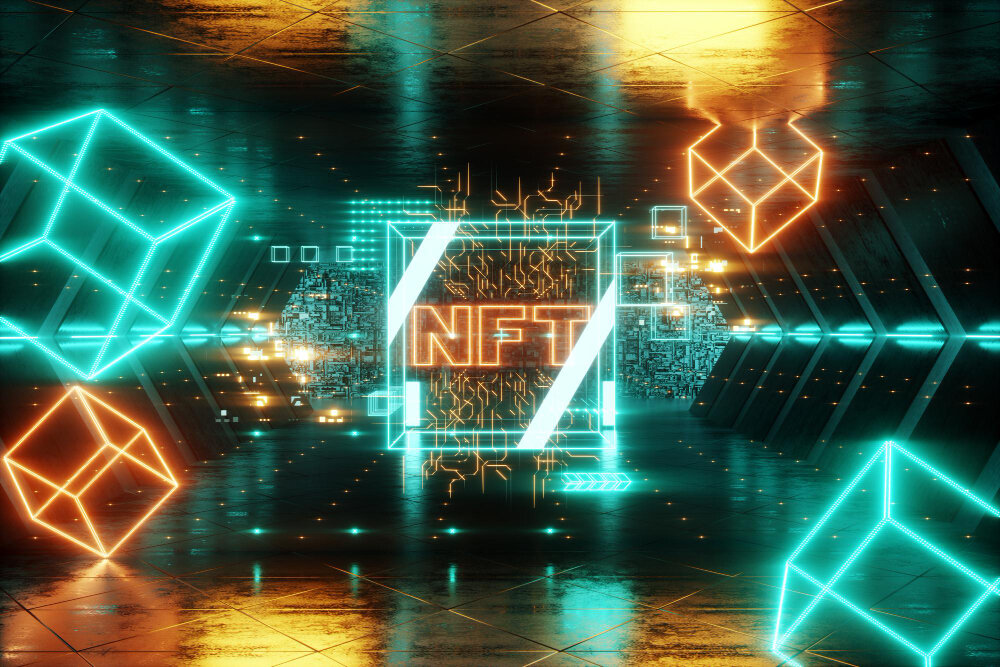What Does NFT Stand for? An Introduction
In recent years, we at PlasBit have seen the meteoric rise of digital assets, with cryptocurrencies and blockchain technology becoming more mainstream. One that has been gaining significant traction is the Non-Fungible Token or NFT. NFTs have taken the digital art world, collectibles, and even virtual real estate by storm, with prominent artists, celebrities, and investors jumping on the bandwagon.
At PlasBit, we have followed this trend closely, so we want to share our insights into the world of NFTs with you. In this article, we will closely scrutinize the concept of NFTs, explore their history, understand their underlying technology, and discuss the various NFTs today. We will also look deeply into the role of NFTs in the art world, the potential for investing in these unique digital assets, and what the future may hold for this fascinating phenomenon.
So, let's dive in and demystify the meaning of what does NFT stand for!
Understanding the Concept of NFTs
To honestly answer what NFT stands for, we must first grasp the concept of fungibility. In simple terms, fungibility refers to an item's ability to be exchanged for another identical item. For example, a $1 bill is fungible, as it can be exchanged for another $1 bill without affecting its value. On the other hand, non-fungible items are unique and cannot be exchanged on a one-to-one basis without losing their value or significance.
NFTs, as the name suggests, are digital tokens representing ownership of a unique and non-fungible item. For example, an NFT can represent digital art, virtual real estate, collectibles, or even physical items such as a rare baseball card or a first-edition book. When you purchase an NFT, you essentially acquire a certificate of authenticity for that specific item, proving that you own the original or a limited edition of the digital or physical asset.
What Does NFT Stand For: NFTs and Blockchain Technology
One of the critical components that make NFTs possible is blockchain technology. Blockchain is, at its core, a decentralized, distributed ledger recording transactions securely and transparently. This technology, which powers cryptocurrencies like Bitcoin and Ethereum, allows for creating and managing digital assets like NFTs.
NFTs are frequently built on the Ethereum blockchain, which supports the creation of digital tokens using a standard called ERC-721. This standard enables NFTs to be unique, indivisible, and easily transferable between users. In addition, the decentralized nature of blockchain ensures that NFTs are secure and tamper-proof, as each token's ownership and transaction history are recorded on the blockchain and cannot be altered or manipulated.
The Answer: What Does NFT Stand For?
Now that we have an excellent basic understanding of the concept and technology behind NFTs, let's dive into the primary question of this article: What does NFT stand for? NFT is an acronym for Non-Fungible Token. As mentioned earlier, non-fungible indicates that the item is unique and cannot be replaced with an identical item. At the same time, a token is a digital representation of an asset or utility.
In the context of NFTs and what NFT stands for, the token represents the ownership and authenticity of a specific digital or physical asset. Thus, NFTs function as digital certificates of authenticity and ownership for unique items, enabling users to buy, sell, and trade these assets online.

History of NFTs and What Does NFT Stand For
The concept of NFTs and the first question of what does NFTs stand for can be traced back to 2012, with the emergence of a project called Colored Coins on the Bitcoin blockchain. Colored Coins were used to reflect real-world assets like property, company stocks, and even precious metals. However, the project faced limitations due to the Bitcoin blockchain's lack of support for complex digital tokens.
The birth of the Ethereum blockchain in 2015 lit up the path to creating modern NFTs. With its support for smart contracts and the ability to create custom tokens, Ethereum allowed developers to build more sophisticated digital assets. The first notable NFT project on Ethereum was CryptoPunks, a collection of 10,000 unique pixel-art characters, each represented by an individual NFT.
However, the launch of CryptoKitties in 2017 truly catapulted NFTs into the mainstream. CryptoKitties allowed users to breed, collect, and trade unique digital cats, with some virtual pets selling for thousands of dollars. The success of CryptoKitties demonstrated the potential of NFTs in digital collectibles and beyond.
How NFTs Work
As previously mentioned, most NFTs are built on the Ethereum blockchain using the ERC-721 standard. This standard enables the creation of unique, indivisible tokens that can represent digital or physical assets. When an NFT is created or "minted," the creator embeds specific metadata into the token, such as the asset's name, description, and unique identifier. In this sense, the data also represents an answer to the question of what does NFT stand for.
The transaction history and ownership of each NFT are recorded on the blockchain, ensuring that the information is secure, transparent, and immutable. This allows users to verify the authenticity and provenance of an NFT, as well as trace its ownership back to the creator.
NFTs can be bought, sold, and traded online, such as OpenSea, Rarible, and Foundation. Transactions typically involve using cryptocurrencies like Ether (ETH), available in your PlasBit crypto wallet. Once an NFT is purchased, it is stored in the buyer's digital wallet, which can be connected to various apps and platforms for display or further trading.
What Does NFT Stand For? Different Types of NFTs
NFTs are incredibly versatile, representing various digital and physical assets. All of these can provide an answer to our question of what does NFT stand for or represent. Some of the most popular forms of NFTs include:
- Digital Art: NFTs have revolutionized the art market, enabling artists to create, sell, and monetize digital artworks in a way that was previously impossible. Buyers can acquire unique or limited edition digital artworks, with the NFT as proof of ownership and authenticity.
- Collectibles: From virtual trading cards to digital pets, NFTs have given rise to a new generation of digital collectibles. These items can be bought, sold, and traded on various platforms, with some rare NFT collectibles fetching excellent prices.
- Virtual Real Estate: NFTs can represent ownership of virtual land, properties, and structures within virtual worlds and metaverses like Decentraland or The Sandbox. Users can buy, sell, and develop these virtual properties, creating unique experiences and generating income through in-world businesses or events.
- Physical Assets: NFTs can also represent ownership of physical items, such as rare sports memorabilia, luxury goods, or real estate. This enables buyers to verify the authenticity and provenance of these items and easily trade and transfer ownership through digital means.
What Does NFT Stand For? The Rise of NFTs in the Art World
The art world has witnessed a significant shift with the emergence of NFTs, as artists and collectors embrace the potential of digital art and ownership. NFTs offer several advantages for artists, including:
- Control Over Ownership and Royalties: Artists can retain control over the ownership and sale of their digital works by embedding specific rules and conditions into the NFT. This allows them to set their prices, limit the number of editions, and even earn royalties on future artwork sales.
- Global Reach and Accessibility: NFT platforms enable artists to showcase and sell their work to a worldwide audience, removing geographical barriers and traditional gatekeepers in the art world. This allows for greater exposure and opportunities for artists to connect with collectors and fans.
- Provenance and Authenticity: The blockchain technology underpinning NFTs ensures that the provenance and authenticity of digital artworks can be easily verified, protecting artists and collectors from fraud and forgery. In this case, what does NFT stand for could be answered by trust and authenticity.
These advantages and the growing interest in digital art and collectibles have led to a surge in NFT art sales and record-breaking auction prices. Notable examples include the $69 million sale of Beeple's "Every Day: The First 5000 Days" at Christie's auction house and the $6.6 million sale of a single NFT artwork by the artist Pak on the Nifty Gateway platform.
Furthermore, NFTs have democratized the art world to some extent by providing opportunities for emerging and independent artists to showcase and monetize their work. This has challenged the traditional art market, which was criticized for being exclusive and inaccessible to many artists and collectors.
Investing in NFTs
As with any emerging market, at PlasBit, we educate that investing in NFTs can be exciting and risky. NFTs are a comparatively new phenomenon, and their long-term value and sustainability are still uncertain. However, for those willing to take the risk, NFTs can provide a unique opportunity to invest in a rapidly growing and innovative market.
One approach to investing in NFTs is to focus on established artists or collectors with a proven track record of success in the NFT market. However, this approach can be costly, as some of the most sought-after NFTs can sell for millions.
Another approach is to look for emerging artists or niche markets that may offer long-term growth potential. For example, NFTs representing virtual real estate or in-game items may be worth considering as the popularity of virtual worlds and gaming continues to rise.
Before jumping in and making an NFT purchase with your PlasBit crypto wallet or payment card, it is essential to research the various NFT platforms and marketplaces. Some may offer better investment opportunities or more favorable terms than others. Additionally, it's crucial to understand the risks associated with investing in NFTs, such as market volatility, security concerns, and regulatory uncertainty.
Future of NFTs
The future of NFTs is still uncertain, but many experts believe they represent a significant shift in how we value and own digital assets. As the world becomes increasingly digital, NFTs offer a unique way to authenticate and monetize these assets, providing opportunities for artists, collectors, and investors.
Furthermore, the potential applications of NFTs extend beyond the art world, with possibilities in gaming, virtual reality, and even real-world assets. For example, NFTs could represent ownership of renewable energy credits, carbon offsets, or other sustainable assets, creating new opportunities for environmental conservation and impact investing.
However, the future of NFTs also depends on overcoming some of the challenges and criticisms associated with the current market. These include concerns about energy consumption, environmental impact, and the potential for market manipulation and fraud.
Conclusion by PlasBit: What Does NFT Stand For?
In conclusion, NFTs represent a fascinating and innovative development in digital assets. They offer a unique way to authenticate and monetize non-fungible items, providing artists, collectors, and investors opportunities to participate in a rapidly growing market.
However, as with any emerging market, investing in NFTs comes with risks and uncertainties. Therefore, it is essential to approach this market cautiously, research the various platforms and marketplaces, and understand the long-term potential and risks associated with each investment.
What does NFT stand for? Beyond the phrase Non-Fungible Token, it also reflects the rise of NFTs and the potential for blockchain technology to revolutionize how we value and own digital and physical assets. As this technology continues to evolve, we at PlasBit expect to see even more innovative applications of NFTs in the years to come.







